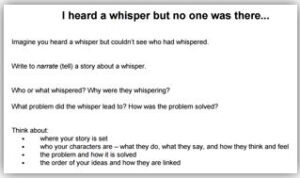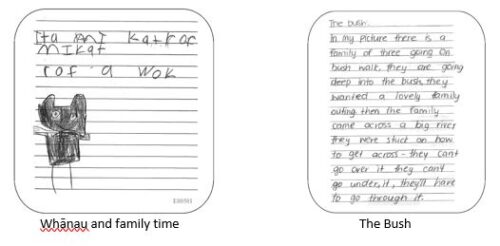9 key things to consider when choosing an e-asTTle writing prompt
By Garry Taylor on November 2, 2016 in Assessment tools
There are a number of reasons why your choice of e-asTTle prompt is important. I have outlined 9 of these below. I know from my work with schools that many of you do have questions regarding this assessment tool.
Questions I am commonly asked include:
Does the writing purpose matter?
Can we use the same prompt or do we use the same purpose but different prompt?
Can we just use one prompt for everyone?
What is e-asTTle Writing?
e-asTTle is the Ministry’s online assessment tool, developed to assess students’ achievement and progress in reading, mathematics, writing, and in pānui, pāngarau, and tuhituhi. The revised writing tool assesses the independent writing of continuous texts across five purposes: describe, explain, recount, narrate, and persuade. There are 20 prompts that cover the five writing purposes and each one has its own difficulty rating. This is why it is important to only use these prompts if you are intending to enter the scores into e-asTTle.
The role of purpose in e-asTTle Writing
In e-asTTle Writing, as with the Literacy Learning Progressions, greater emphasis is placed on the quality of the writing rather than the ability to write to purpose. This is evident in the marking rubric as Structure and Language is the only element of the seven where purpose is described and considered.
Purpose in writing is simply a way of explaining the typical features you would normally see when writing for a particular purpose. The other six elements of writing (Ideas, Organisation, Vocabulary, Sentence Structure, Punctuation, and Spelling) can be authentically marked even if the student has not necessarily written to purpose. The generic exemplar “The Adventerous Dog” (sic) is a good example; the script is scored low for Structure and Language because the student’s writing is more suited to either the Narrative or Recount purposes, but the marking of the other six elements is not affected by this.
My 9 key things to consider when choosing a writing prompt
Keep the students in mind. The most important thing to consider is whether the prompt you choose is going to provide the students with the opportunity to show their full repertoire of writing skills.
How abstract are the concepts in the prompt? Take a look at this prompt on ‘A community facility’. You can see that very young students will struggle with this concept. Refer to the e-asTTle Writing Manual (Page 15), available for download on the e-asTTle - Reference material Tāhūrangi page, for more information on this.

How complex is the text structure? A purpose such as Narrative typically has quite a complex structure which often includes description of setting and characters, complication, and resolution. (See the example below.) This type of structure is hard to accomplish if your students are only writing 15 to 20 words.

How relevant is the context? Prompts that deal with issues of the wider world, such as Caring for planet Earth, suit older students, whereas a prompt such as ‘Time with Friends’ is more suitable for younger students because it is a context they can readily relate to.

Six prompts have been written in simplified language so they are suitable for young students. These are the three Recount prompts (Whānau and family time, Time with friends, and What I did well) and three of the Describe prompts (Girl, Adult and child, and Dogs at the beach). I suggest you use one of these six prompts in your junior school.
Do the specific exemplars look anything like your students’ writing? When you create a prompt in e-asTTle it produces a test file. Included in this are specific exemplars directly related to the prompt you have chosen. These are always in ascending order – so the lowest scoring examples come first. These are a good indication of suitability and whether you will have exemplars to make relevant comparisons against. Take the first specific exemplar from the recount ‘Whānau and family time’ vs the first exemplar from the narrative ‘The bush’, as an example. You can see there is a vast difference in writing quality, and it makes it obvious that ‘Whānau and family time’ is a better choice for using with younger and lower ability writers than ‘The Bush’.

Personally, just as I would not give Year 1-3 students a Narrative prompt, I wouldn’t give students in Years 6-10 a Recount. In my experience, recounts from students at these levels tend to be pretty bland and don’t seem to give students the opportunity to show their full range of writing abilities.
Don’t use the same prompt twice. There is no need to use the same prompt at the beginning of the year and the end of the year. The concept of a prompt is that it gives freedom to build and communicate ideas from a general idea rather than be directed too specifically. However, as the prompts are all based on the same scale there is no need to use the same prompt twice in a row. You may want to consider using the same purpose but even that is not necessary.
Not everyone has to use the same prompt. It is entirely appropriate to give different prompts to different areas of the school. For example, you may choose to give the Recount prompt ‘Time with Friends’ to your Year 1-3 students and the Explain prompt ‘Good friends’ to your year 4-6 students.
We have a range of options available to support you with e-asTTle. Contact Garry today to learn more.
Other articles you might like
A great starting place… But then what?
Have a think about the last time you deliberately had to learn something. What did you do to help you learn? What helped? What was most useful?
Schools are busy places. Classrooms are even busier places; it is all too easy to get through a day without having an informal/non-subject-focused conversation with a student. Sure, we may talk to them (and don’t get me wrong most teachers I speak with say that they feel like they talk all day) but have we really stopped and had a conversation with our learners? A conversation – where people listen and talk in equal degrees. We know the importance of conversations focused on learning, progress, and achievement and the value these hold in empowering and engaging the learner. However, in this blog I wanted to focus on the value of an informal conversation with learners.
